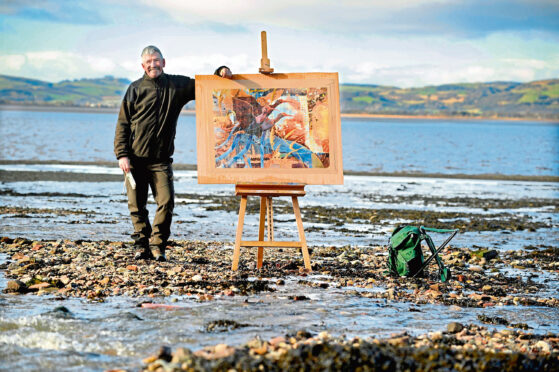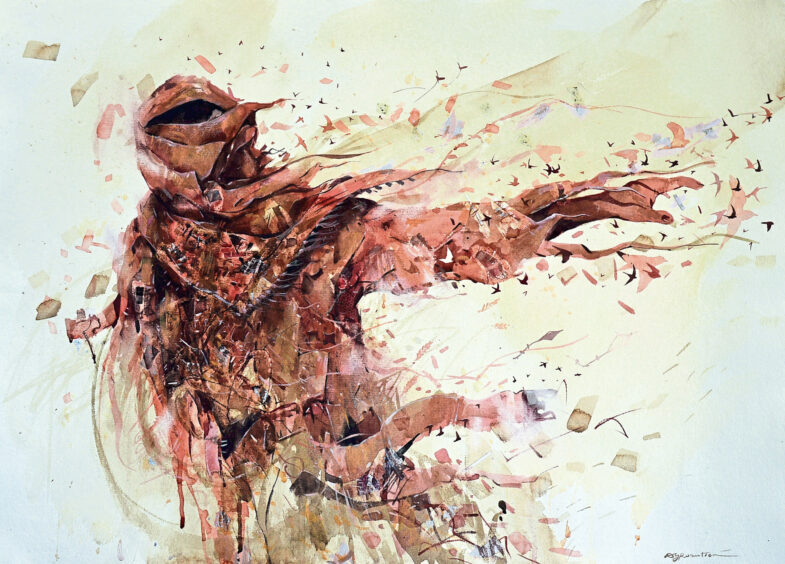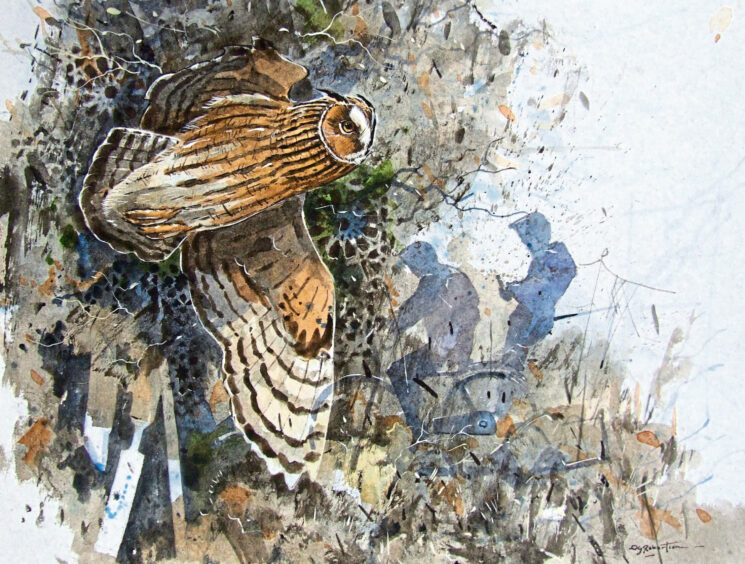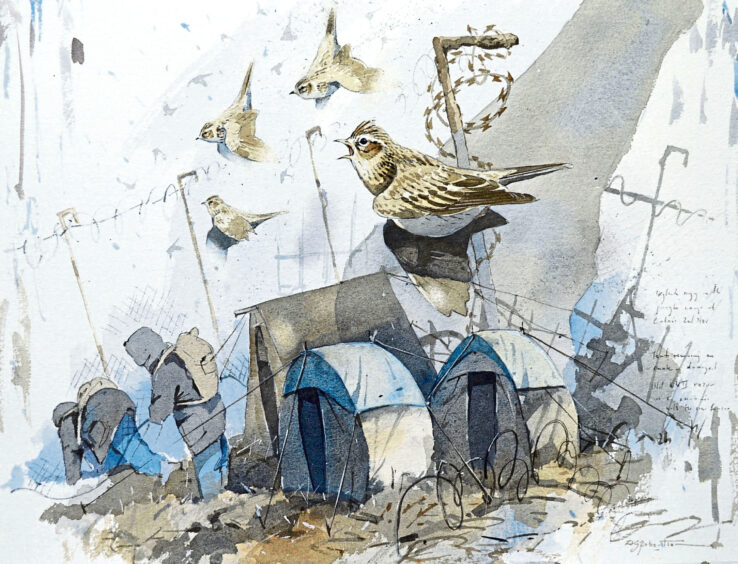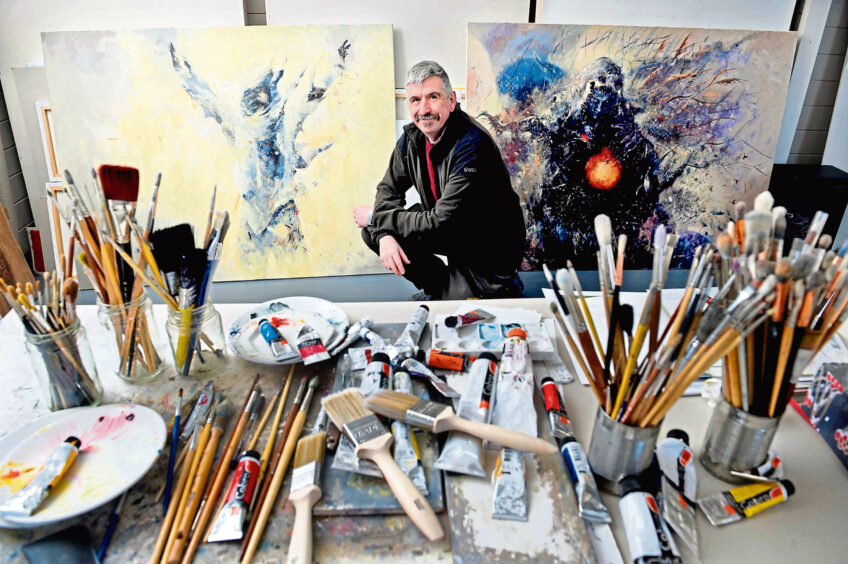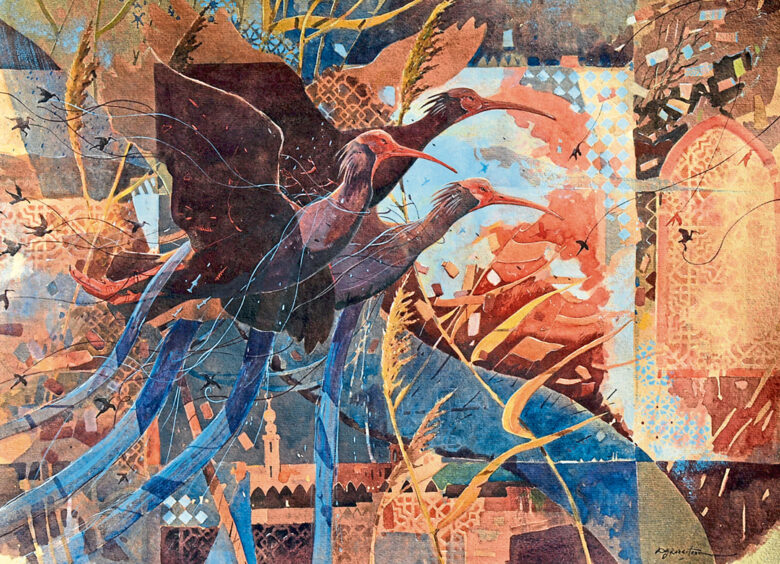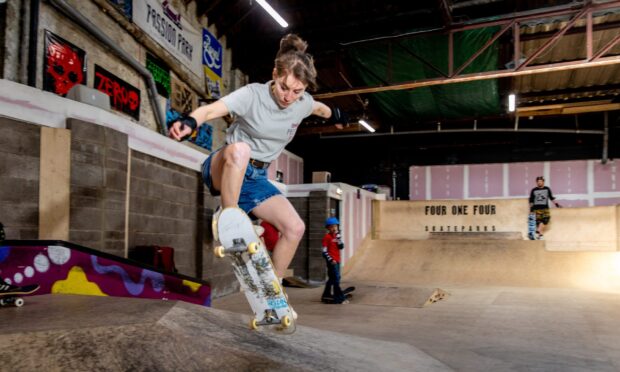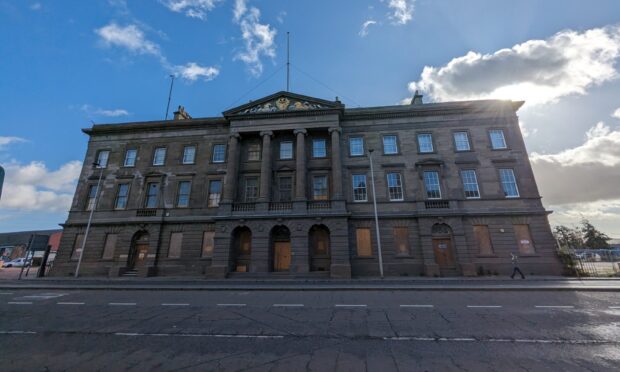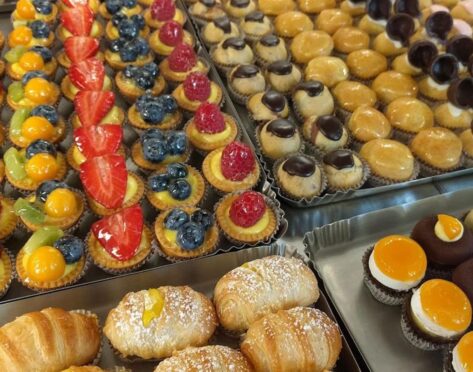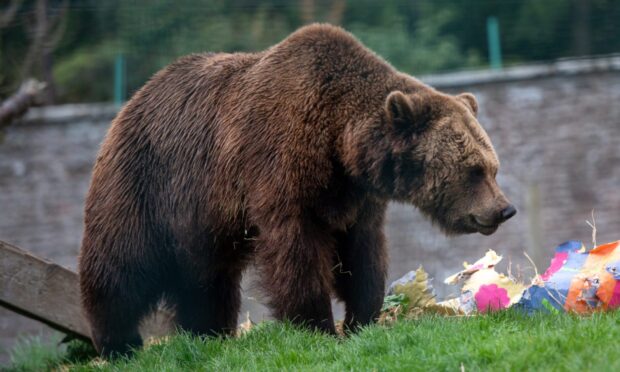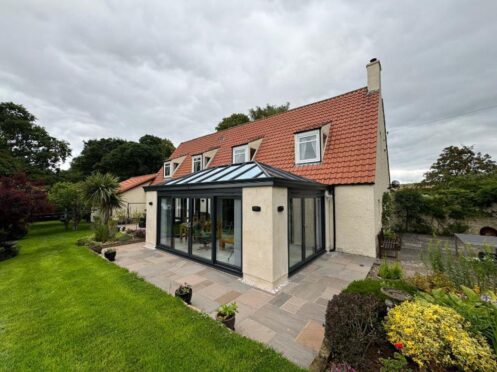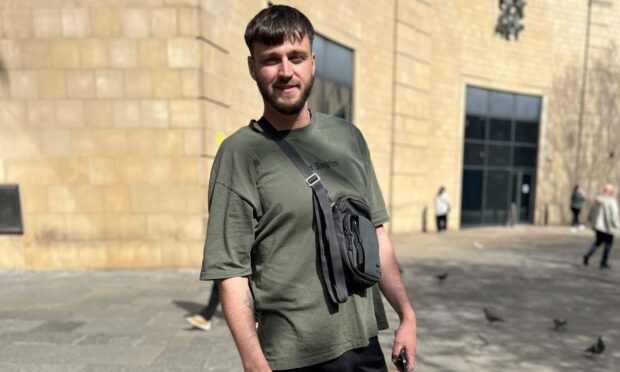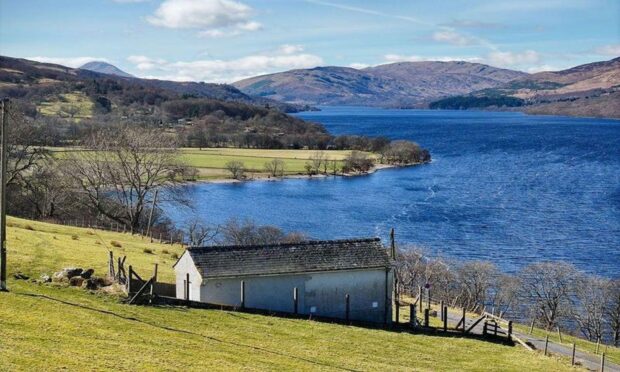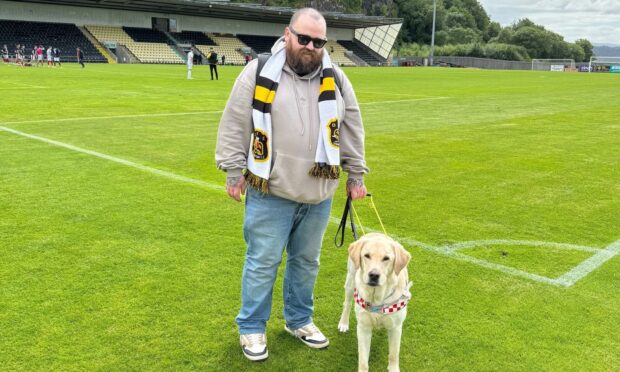Derek Robertson is renowned for his beautiful representations of both landscape and animals. From his idyllically-situated studio on the shores of The Tay at Balmerino, The Duncan of Jordanstone Art College graduate has focused on studying, sketching and painting migratory birds in particular. “I am fascinated by them,” he says, “by their abstract shapes, their song, their behaviour.”
He has been involved in scientific studies of the migratory journeys of birds from the Arctic, through Europe and into Africa. At the height of the Syrian refugee crisis, the artist watched news reports of boats landing on beaches all over the Mediterranean. “I suddenly realised that I recognised the beaches,” he recalls. “They were the places I had visited to study, paint and draw migrating birds.”
Now those birds had been joined on their journey by humans making often treacherous trips across land and sea to escape war, persecution or the effects of climate change. Derek found himself appalled and fascinated by the parallels and the seeds for an ambitious new body of work were sown.
“I’m a wildlife and landscape artist but it doesn’t completely satisfy,” he admits. “I want to talk about things that I think about and each branch of that work informs the other.”
In the end, he decided, with the support of his wife, to take a self-funded sabbatical to explore the concept of the migration of people in the context of his own knowledge of the flight paths and migratory patterns of birds.
While he was still in the planning stages, he suddenly had to up sticks and travel to The Jungle refugee camp in Calais. “Reports were coming in that the French authorities were moving in to try to close the camp. They had started tearing down the camp and parts of it were on fire.
“I went out and volunteered with a couple of charities. I ran art activities through them with unaccompanied children, some as young as 13.”
Derek describes this first experience of being in a refugee camp as “startling and humbling. I met people who had gone there to help for a long weekend and stayed for years. It was completely emotionally draining for me so imagine what it’s like if you are a migrant actually living there.
“Often the stories I heard and things that I saw were too hard to portray.”
Vulnerable subjects
Derek was struck by the sheer vulnerability of the people he encountered and very much aware that he didn’t want his presence to be voyeuristic in any way. With that in mind, he used a tactic that he uses wherever he is working. “I paint and sketch a lot from life so that’s what I did in the camp. I sat on the fringes, drawing and sketching and people would just wander up to see what I was up to.
“We often didn’t speak the same language but it was the start of something. It was non-intrusive and a really good way of making contact with people, especially as I’m not much of an extrovert.”
At the same time, the irony of an experienced wildlife artist painting people who are marginalised and often described using dehumanising language more often associated with insects or animals wasn’t lost on Derek. He was also careful not to paint particular people or photograph them without their express permission. “Some of my paintings are just of people, but they are always disguised or captured as they turn away.”
In Calais, he worked with aid organisations to help them gain the trust of the young people arriving at the camp. Some of the children had walked for months to get there. They arrived in the French winter wearing nothing more than shorts and flip-flops. Derek describes one tactic that helped both him and the aid workers engage with the boys. “They were understandably very wary of anyone who looked like they were in authority,” he explains. “I got a big roll of packing paper out and got one of the charity workers to lie down so I could draw round him. Then I invited the kids to colour in the outline, they would write some words and sometimes even their name or age on the paper.”
Communicating via art
Once they gained some confidence, the children where happy to draw around each other and, most importantly to chat with the aid workers who could find out what size shoes they wore or whether they needed to see a doctor.
Derek describes the change that the boys underwent during this kind of session: “It was like their ‘hard’ mask came down, they started out looking 17 and by the time they had become immersed in drawing or writing, years seemed to fall from their faces.”
After the trip to Calais, “I came back home and reflected through the winter. I saw clear connections with our experience in Scotland of forced emigration and clearances, the social loss and resulting degraded environment.
“I got in touch with community and refugee groups in Edinburgh, the Isle of Bute (which has Scotland’s largest refugee community) and local mosques in Dundee.”
He also travelled to camps in Sicily, Cyprus and Jordan. He was caught up in a riot in Calais, escorted from camps by armed officials and saw sights that he found difficult to process, let alone paint.
In Sicily he experienced what he calls, “the most polite mugging ever.” Having been chatting to three young men from Chad, he offered them some cigarettes, as a way of building their trust. They then decided to look in his bag for the rest of the pack and the search escalated into a hunt for money.
“They said please and thank you. And also they had knives,” says Derek, drolly, but he clearly doesn’t begrudge them the items they took. “They had nothing, absolutely nothing. They are in a completely desperate situation.”
Derek also spent time working in a refugee camp in Jordan. “I was teaching in a school there – the children were able to access teaching in maths and languages but they didn’t have any creative instruction.”
Coming back to Scotland, it was then time to make sense of the experiences, sketches, paintings and photographs. He had a wealth of material, including his studies of birds from the various locations he had visited.
The initial idea had been one large painting but that quickly spiralled, first to a collection of five or six pieces and then, “the more I thought about it – it became a compulsion to do something that had a voice.”
At first glance, the paintings that make up Migrations are unmistakably the work of Derek Robertson, wildlife artist. But this body of work contains so much more: the images are multilayered, pieces of flotsam featured in the same frame as migrating birds. Some of the snow buntings who frequent the Fife shore also appear in paintings of Calais, where they are painted in painstaking detail against the backdrop of diggers pulling the camp down.
Abandoned boats, life-jackets and temporary shelters erected by refugees are painted in stark contrast to the motion of the birds flying past or who will make a fleeting stop before they continue their journey unhindered by man-made borders.
Colour plays a hugely important part in this body of work, something that was a new departure for the artist; “I didn’t want the work to be a dirge, I wanted it to be engaging, wanted to do work that was really different to what I have done in the past. The majority of people I was speaking to came from the Middle East and Africa.” He took the intense colours of those places, took hundreds of photos of ruined boats that had been abandoned on the shores.
“They are almost like sacrificial boats,” he says, “they have been burned so that they can’t be traced back to the traffickers.” One boat still had its Arabic script intact – Derek doesn’t know whether it was the original name of the vessel or had been added by its most recent passengers but either way, the name Hopeful Journey stayed with him.
“As a wildlife artist I usually paint a lot of greens and greys and browns so the bright colour felt very impactful.”
Hard to let go
Now that Migrations is on display in Forfar’s Meffan Gallery, Derek hasn’t quite let go of the project. “I went down to England to speak to people who had been involved with the Yarl’s Wood Immigration Removal Centre.” He says.
Of course, there is a new conflict unfolding right on Europe’s doorstep and the artist has also made small steps into researching Dundee’s connections to Ukraine through the games industry.
“I have got an idea,” he admits. “Any project that you do then informs the next one and in that way it will never truly finish.”
Migrations by Derek Robertson RSW is currently on display at The Meffan Museum and Art Gallery, Forfar and runs until October 2022.
